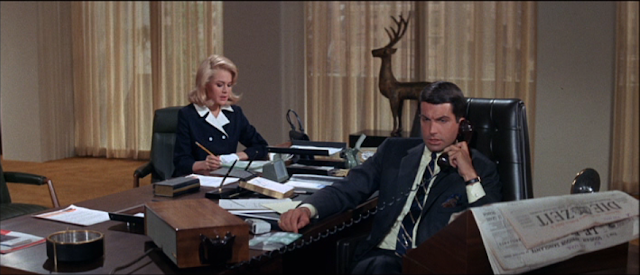Summer is only a few months away. You need to stock up now so you'll have plenty to read on vacation! Need some suggestions? I’ve got you covered with a brand new list of upcoming classic film books. Publication dates range from February to May 2016.
Are you new to my list? Here are the details. Links lead to Goodreads or the publishers' page. Books include biographies, memoirs, scholary texts, coffee table books and more from a variety of publishers. All publication dates are subject to change.
Here are my previous round-ups :
Not to Be Missed: Fifty-Four Favorites from a Lifetime of Film
by Kenneth Turan
PublicAffairs
368 pages – January 2016
by Kenneth Turan
PublicAffairs
368 pages – January 2016
by A.O. Scott
Penguin Press
288 pages – February 2016
by James Bawden and Ron Miller
University Press of Kentucky
424 pages – February 2016
by Joel Grey
Flatiron Books
256 pages – February 2016
by R. Barton Palmer
Rutgers University Press
290 pages – February 2016
by Ben Nussbaum
i5 Press
96 pages – March 2016
by Laura Horak
Rutgers University Press
296 pages – February 2016
by Scott Higgins
Rutgers University Press
232 pages – February 2016
by Mia E. M. Treacey
Routledge
198 pages – March 2016
by Shirley MacLaine
Atria Books
224 pages – March 2016
by Amanda Ann Klein and R. Barton Palmer
University of Texas Press
366 pages – March 2016
by Richard B. Jewell
University of California Press
296 pages – March 2016
by Miriam J. Petty
University of California Press
312 pages – March 2016
by Cheryl M. Willis
McFarland & Company
March 2016
by Edwin M. Bradley
McFarland
277 pages - March 2016
by Cindy De La Hoz
Running Press
176 pages – April 2016
by Charles Silver
Museum of Modern Art
256 pages – April 2016
by Vincent Price and Leo Hershfield
Open Road Media
(e-book) 156 pages – April 2016
by Donald Dewey
Rowman and Littlfield Publishers
272 pages – April 2016
by Harlan Lebo
Thomas Dunne Books
384 pages – April 2016
by Graham Tarrant
Summersdale
160 pages – April 2016
by Marty Feldman and Eric Idle
Rare Bird Books
320 pages – April 2016
by Ian Brookes
BFI
272 pages – April 2016
by Simon Callow
Viking
624 pages – April 2016
by Sean K. Smith
Hatherleigh Press
112 pages – April 2016
by David Bordwell
University of Chicago Press
160 pages – April 2016
by Michael Sheridan and David Harvey
Skyhorse Publishing
276 pages – April 2016
by Nathaniel Crosby and John Strenge
Dey Street Books
224 pages – May 2016
by Jon Solomon
Oxford University Press
640 pages – May 2016
by James S. Williams
SUNY Press
320 pages – May 2016
by Breixo Viejo
Oak Knoll Press
268 pages – May 2016
by Mark A. Vieira
Running Press with TCM
336 pages – May 2016
by Annika Geiger
i5 Press
96 pages – May 2016
by Brian J. Snee
University Press of Kentucky
174 pages – May 2016
by Barry Avrich
ECW Press
400 pages – May 2016
by Tom Smith
Peter Owen Publishers
160 pages – May 2016
by Mick Broderick
Columbia University Press
208 pages – May 2016
by Emilio D’Alessandro and Simon Marsh
Arcade Publishing
384 pages – May 2016
by Jeremy Arnold and Robert Osborne
Running Press with TCM
304 pages – May 2016
by William Paul
Columbia University Press
432 pages – May 2016
Did any of these books catch your eye? Tell me in the comments section below. I'm currently reading Conversations with Classic Film Stars.















































































